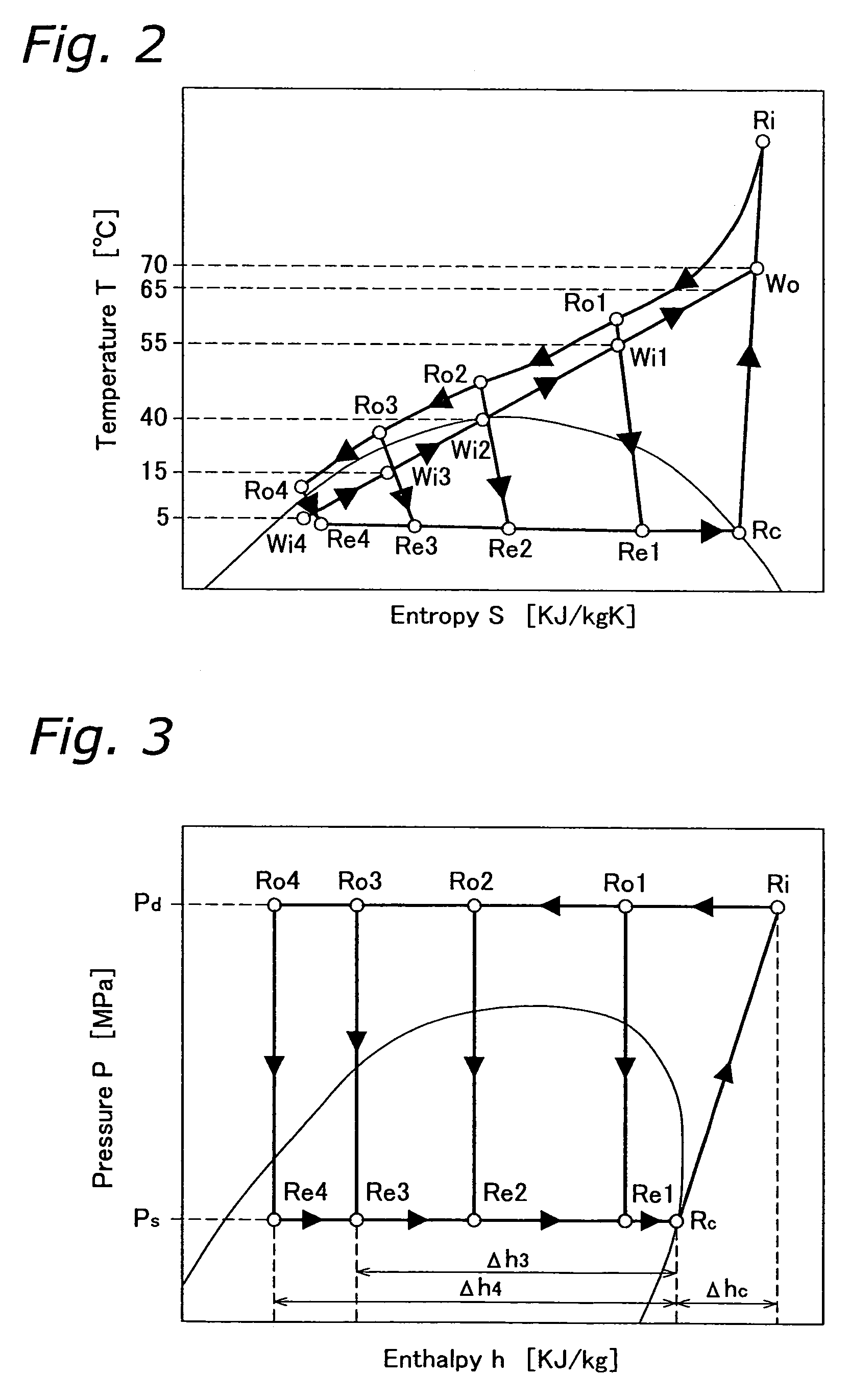Air conditioning system
a technology of air conditioning system and air temperature, which is applied in the direction of domestic cooling apparatus, lighting and heating apparatus, heating types, etc., can solve the problems of large proportion of ventilation heat load to the total amount of heat load to be treated in the air conditioning system, inability to reduce the ventilation heat load necessary for maintenance of iaq, and discomfort of the occupant in the room, so as to achieve comfortable room heating and increase the temperature level of room heating device.
- Summary
- Abstract
- Description
- Claims
- Application Information
AI Technical Summary
Benefits of technology
Problems solved by technology
Method used
Image
Examples
example 1
(4) Modified Example 1
[0089]In the above described air conditioning system 101, the supply water heating device 191 is connected to the heating medium circuit 104 such that the heating medium whose temperature is the lowest as a result of releasing its heat in the radiator 141, the fan convector 142, the floor heating device 143 and the outdoor air heating heat exchanging device 144 is supplied, however, the supply water heating device 191 may be connected to the heating medium circuit 104 such that a high temperature heating medium that just has been heated in the heating medium—refrigerant heat exchanger 122 is supplied.
[0090]For example, in the air conditioning system 101 that does not include the fan convector 142 as shown in FIG. 7, the heating medium circuit 104 may be connected to the heating medium—refrigerant heat exchanger 122 such that the heating medium heated in the heating medium—refrigerant heat exchanger 122 is first supplied to the supply water heating device 191, a...
example 2
(5) Modified Example 2
[0093]In the above described air conditioning system 101, the supply water heating device 191 (or the first and second supply water heating devices 192, 193, when two heat exchangers are disposed) is connected to the heating medium circuit 104 and configured so as to heat water to be supplied to the humidifier 182 with the heat of the heating medium. However, the supply water heating device 191 (or the first and second supply water heating devices 192, 193, when two heat exchangers are disposed) may be connected to the refrigerant circuit 120.
[0094]For example, in the air conditioning system 101 that does not include the fan convector 142 as show in FIG. 9, the supply water heating device 191 may be connected to the refrigerant circuit 120 such that the refrigerant sent from the heating medium—refrigerant heat exchanger 122 to the expansion mechanism 123 is supplied. Also in this case, as in the air conditioning system 101 shown in FIG. 1, the radiator 141, the...
example 3
(6) Modified Example 3
[0098]A description was given of the configuration of the air conditioning system 101 shown in FIGS. 8 and 11 of the above described modified examples 1 and 2 in which both the first and second supply water heating devices 192, 193 are connected to either one of the heating medium circuit 104 and the refrigerant circuit 120. However, it is not limited thereto, and either one of the first and second supply water heating devices 192, 193 may be connected to the heating medium circuit 104, and the other one may be connected to the refrigerant circuit 120.
[0099]For example, in the air conditioning system 101 that does not include the fan convector 142 as shown in FIG. 12, the first supply water heating device 192 may be connected to the refrigerant circuit 120 such that the refrigerant sent from the compressor 121 to the heating medium—refrigerant heat exchanger 122 is supplied; the second supply water heating device 193 may be connected to the heating medium circu...
PUM
 Login to View More
Login to View More Abstract
Description
Claims
Application Information
 Login to View More
Login to View More - R&D
- Intellectual Property
- Life Sciences
- Materials
- Tech Scout
- Unparalleled Data Quality
- Higher Quality Content
- 60% Fewer Hallucinations
Browse by: Latest US Patents, China's latest patents, Technical Efficacy Thesaurus, Application Domain, Technology Topic, Popular Technical Reports.
© 2025 PatSnap. All rights reserved.Legal|Privacy policy|Modern Slavery Act Transparency Statement|Sitemap|About US| Contact US: help@patsnap.com



